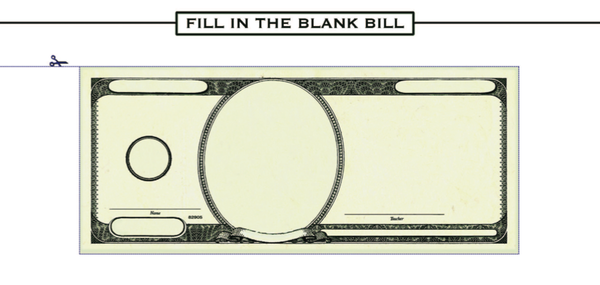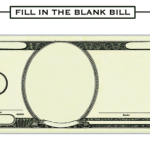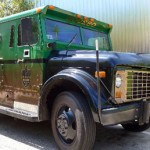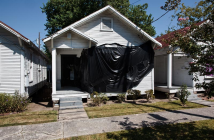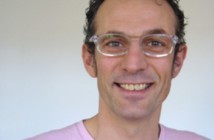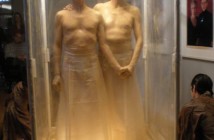The problem with the Fundred Dollar Bill Project is that it’s really hard to explain in ten seconds or less. Attention spans are short these days, so spending exorbitant amounts of time outlining why this is a worthwhile cause usually means most people have zoned out by the time you get to “And the way that YOU can help...” Another problem is that lead contamination is not a “sexy” cause. Not that any charitable organization is especially “hot”, but lead contamination is pretty invisible, so a nationwide collaborative art project designed to address this problem may not get the traction or attention it deserves.
I’m the Project Coordinator at an organization called Artists in Context who are acting as the main New England Fundred coordinators. Lately most of AIC’s efforts have been devoted to Fundred and along with many other members of the Boston community I’ve been working to raise awareness about the topic. Sadly I’ve discovered that it’s actually difficult to get people involved in a project that doesn’t cost them money, and only a small amount of their time.
That has not stopped Mel Chin and the Fundred Dollar Bill project from working to clean up America’s soil for more than 3 years now. Chin, a conceptual visual artist from Houston, Texas, created the Fundred project to support Operation Paydirt, an initiative that offers a scientifically-proven method to neutralize hazardous lead. The scientists behind Operation Paydirt, Howard Meilke and Andrew Hunt, have developed a method of transforming lead into a non-hazardous substance. They use phosphate amendments such as Apatite II (a mineral derived from the fish industry) that lock the lead into a stable mineral formation that renders the lead non-bioavailable (not able to be readily absorbed into the body) The team behind Paydirt has also developed a citywide implementation strategy with the potential of creating a model for all cities facing similar threats.
Fundred and Operation Paydirt are focusing their initial fundraising and clean-up efforts on New Orleans, where 86,000 properties are estimated to have unsafe levels of lead in the soil, and at least 30% of the inner city childhood population is affected from lead-poisoning. Current methods of addressing lead contamination include digging out and removing affected soils (“dig and dump”), or covering soils with sand, woodchips, stone, concrete, sod or covering lead-polluted soil with uncontaminated soil. These methods involve “capping” contaminated soils, which means the lead-polluted soil remains in place. The alternative to these more traditional mitigation measures developed by Operation Paydirt actually neutralizes the lead in-situ. (Data comes for the Operation Paydirt white pages)
In order to raise awareness about Operation Paydirt, Chin has designed The Fundred Dollar Bill Project, a nationwide, collaborative art project that asks people of all ages and walks of life to create their own version of the U.S. $100 bill. Anyone can create one. Operation Paydirt estimates the cost to treat New Orleans soil, and make safe every lead contaminated property, at $300,000,000. The goal of the Fundred Project is to collect this same dollar amount in Fundreds and deliver them to Congress in the spring of 2010, with the hopes they will exchange it for actual government funds.
Lead contamination is not unique to New Orleans nor was not caused by Hurricane Katrina. Most large cities have areas of contamination including Baltimore, Detroit, Cleveland, Chicago, Washington D.C., Indianapolis, Los Angeles, Oakland, Minneapolis/St. Paul, Milwaukee, El Paso, Honolulu, and Philadelphia. Closer to home, one in three children in Providence under the age of six have elevated blood lead levels. The symptoms of lead poisoning can be hard to detect and even seemingly healthy people can have high blood levels of lead. Signs and symptoms usually don't appear until dangerous amounts have accumulated. In theory, if Congress allocates the funds that are being requested with this massive and beautiful petition, a protocol for lead clean-up can be implemented in any area where soil is contaminated.
Throughout his career Mel Chin has found different ways to address social, political and environmental issues with conceptual art projects. By creating the Fundred Dollar Bill project he’s created a human face for a scientific process. Instead of lecturing and guilt-tripping about the horrors of lead poisoning, Chin has developed a way to make the information available and widespread. More importantly, he will ensure that Congress knows that 300 million people in America care about the fate of the soil upon which they live and play. Whether or not Congress grants the money, the Fundred Project has nevertheless found a way to pervade at least some part of the American society. People are thinking and talking about lead contamination and who knows what will happen when that truck rolls up to Congress carrying a petition with 300,000,000 artistic signatures.
- A blank bill that can be downloaded and filled in by students… or anyone!
- The Fundred truck
The Fundred Dollar Bill Project
You can still make your own Fundred and become involved in this project at the following dates and locations:
Thursday, April 22nd - Earth Day on the Greenway, Rose Fitzgerald Kennedy Greenway, 10 am - 3pm.
Thursday, April 22nd: Boston Children's Museum, 10 am - 3 pm
All images are courtesy of the Fundred Project.

